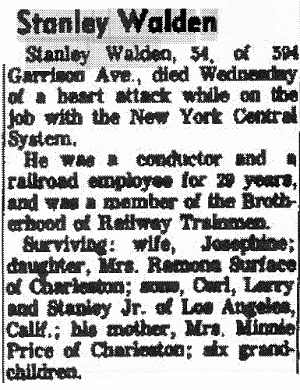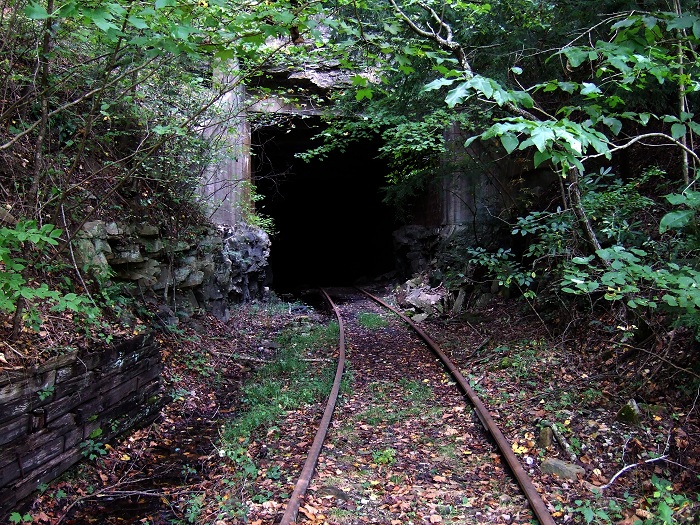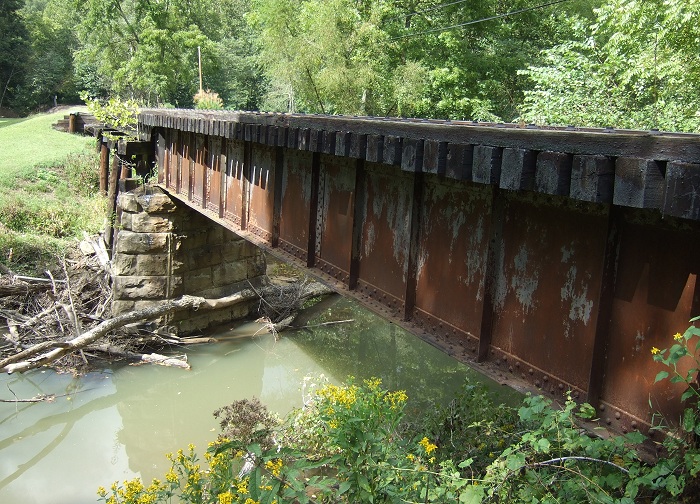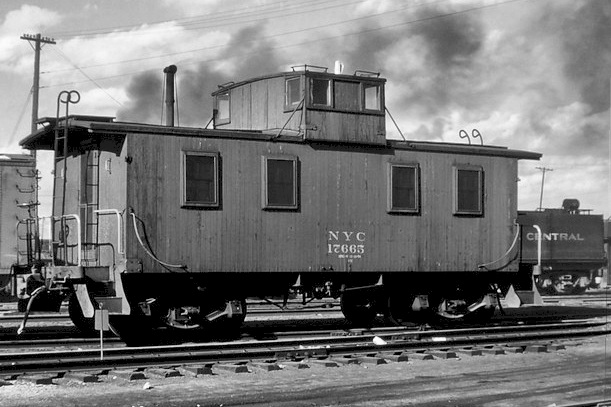THE
"BEELINER" SCHOOL TRAIN
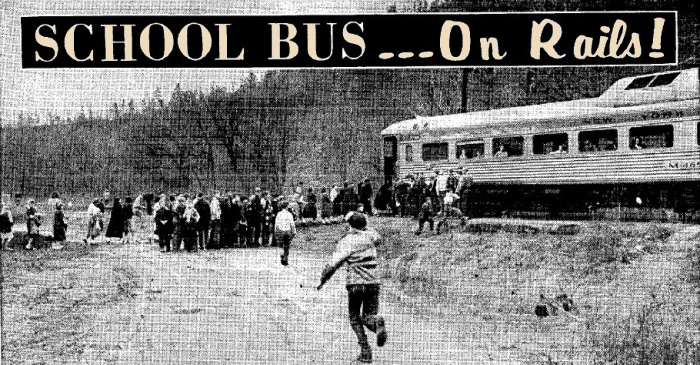
When
I was a child, I lived on Dutch Ridge and missed riding this train
because we moved back to Charleston. I saw the train
gliding along on the NYC Railroad right in front of my house on Smith
Street. It parked for the longest time there off Broad Street in
the early to
late fifties (I've lost track of time) and then it was gone.
I heard many older people talking about riding this train for
years afterwards. The train , the route, and the people have
become an obsession with me.
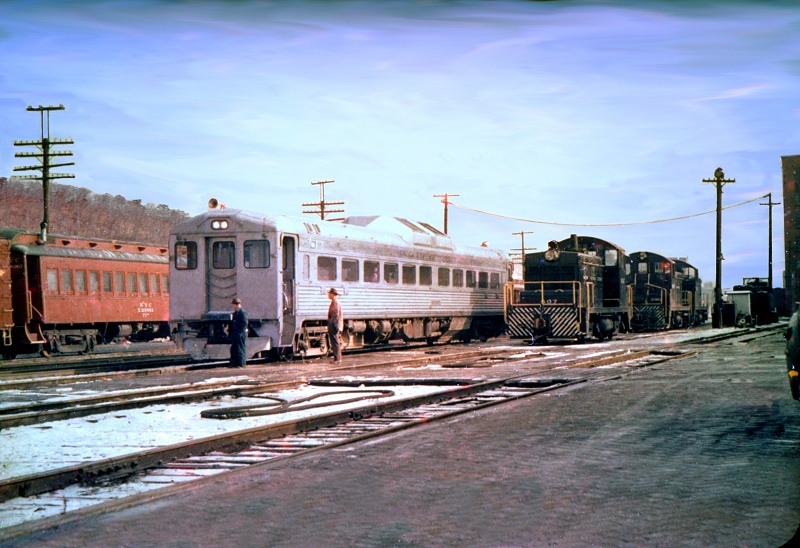 Here is the car parked a block from my house at the
NYC station.
Here is the car parked a block from my house at the
NYC station.
|
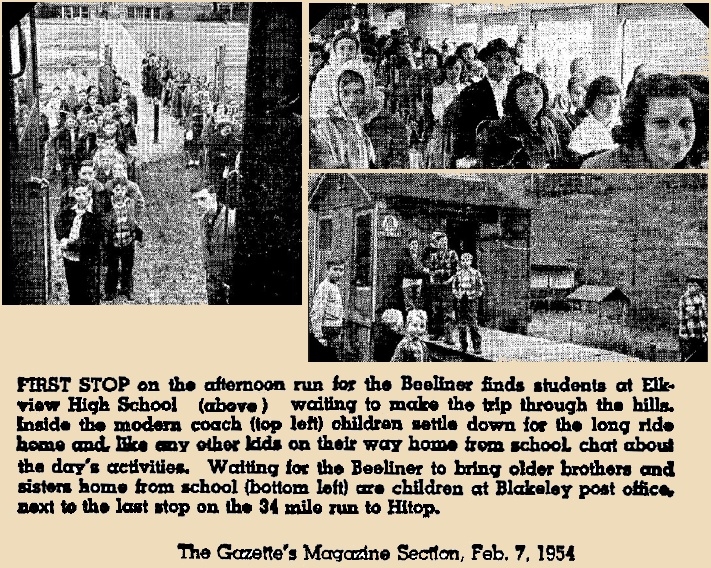
|
From
The Charleston Daily Mail, Aug 11, 2014
From
1925 to 1959, hundreds of students living between Hitop and Elkview
rode it through the hills of Blue Creek, which was home to several
small coal-mining communities.
At the height of coal production,
there were 20 operable mines along Blue Creek at towns like Blakeley,
Wills Hollow, Kendalia, Middle Fork and Sanderson.
So secluded
were these towns that a railroad was built to haul the coal, timber and
other resources back into Charleston, which was just a small river town
at the time. The only other means of travel was by the narrow dirt
roads once used by horse-drawn wagons.
Most of the mines closed
by the early 1930s, but enough people had moved to the area by then to
warrant the addition of a twice-daily passenger line to take students
to school.
Children were able to walk to class for the first 10
years of their life because each town had its own elementary school,
but the train was the only way students could travel the 10 or more
miles to the junior high school in Quick or the high school in Elkview.
This
prompted the Kanawha County Board of Education to commission New York
Central, which operated the railroad, to add a passenger train in 1925
so seventh- through 12th-graders had a way to school. The school board
also paid the fares of each student.
Students would board the
train as early as 7:30 a.m. and arrive at school by 9. They had the
school day to socialize, but were not afforded any time once the bell
rang because the train left immediately after at 3:10 p.m. Most
wouldn’t get home until after 4:30, depending on how far away they
lived from their stop.
Carlos Morris, who rode the train during
sixth and seventh grade, said some students lived miles away. Others
lived so far from the stop they had to cross a mountain just to get
home. For those students, the school day could last as long as 10 or 11
hours.
But for Edith Brewer, another train rider, bonds were made on the train.
“That’s where we had our social life,” she said. “I don’t feel like any
one of us felt like we missed out.”
While
the train students weren’t able to participate in school athletics or
extracurricular activities, the train served as a connector to the rest
of the world.
“If it weren’t for the railroad, we wouldn’t have
been able to go to school,” said Harold Dunbar, who also rode the
train. He said many students stopped attending school after sixth grade
before the train became an option.
While school sports weren’t
an option, the children living in those communities still found time
for games. Morris said many boys would arrive at their stop early to
play football with an old beer can.
Others would arrive early to
make sure they got a window seat when the temperature was warm. In
wintertime, they flocked to the station to warm their hands at a stove.
While most of the stations and tracks have given way to the distress of
time, the stories live on.
Morris
said one of his most vivid memories is of his first train ride. While
the train only moved along the tracks at 15 mph, Morris said he thought
the car was going to tip over when it went around its banked curve.
“I
had to clutch the seat in front of me,” Morris said, adding that he
realized embarrassingly soon he was the only one on the train doing it.
The
total length of the railroad — from its starting point on Bigley Avenue
in Charleston to its final stop at Hitop — was more than 34 miles.
There
were 21 stops along Blue Creek that received students, and by the time
the train reached Coalridge, the 101-passenger cars were near capacity.
In its near half-decade of service, the railroad also was used to carry
mail and occasionally acted as an ambulance.
|
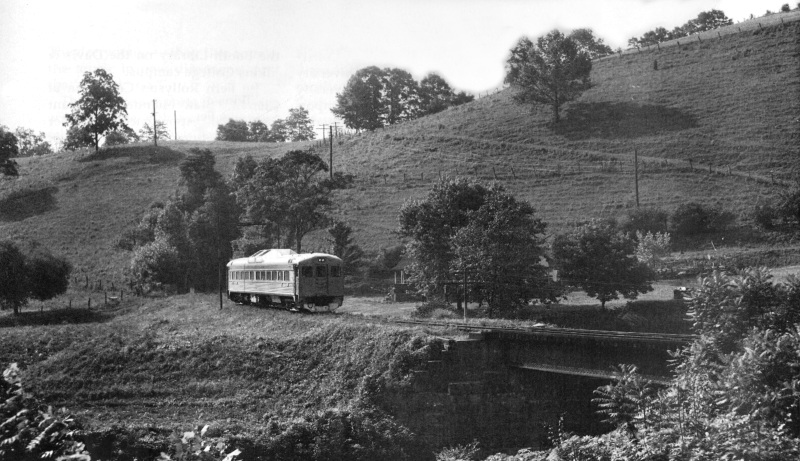
The later Bud Car train in 1954 in
Sanderson area
Photograph
by Richard Cook
Year ago, I rode the same rail bed
that the school children did.
Here are a few photos I took:
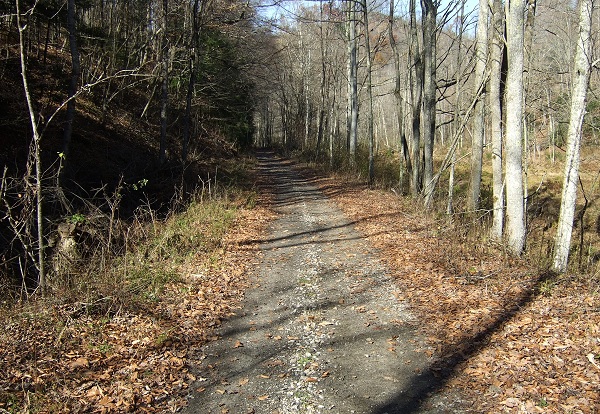
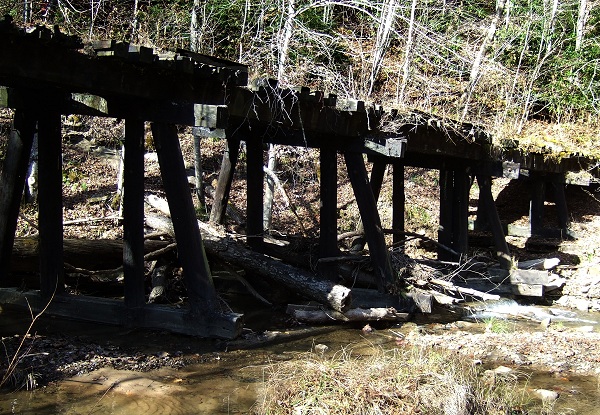
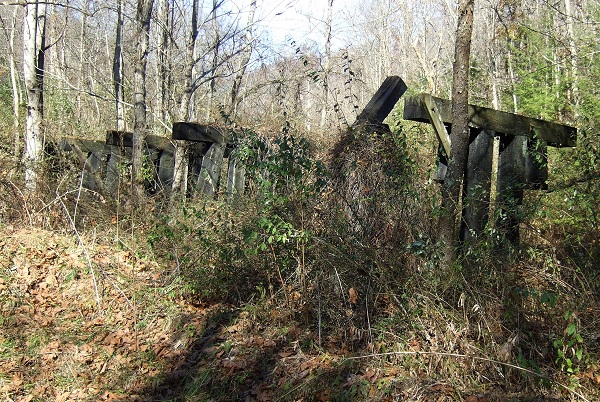
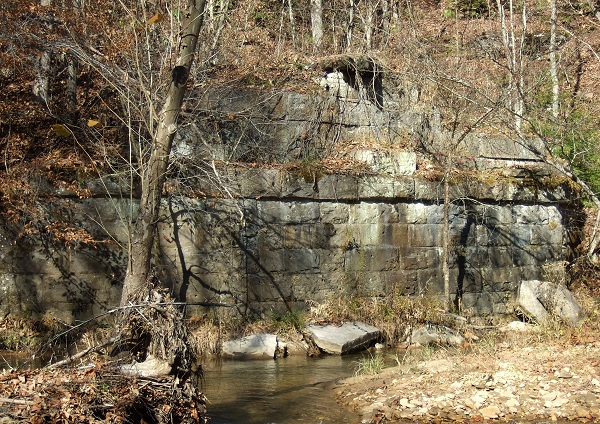

This
photo shows the last stop of the Beeliner near Amelia WV. It
actually went just a little further if no coal cars were in the way,
but this was the official last stop. The sign says "Blakely
Cemetery". Just beyond those signs is the last railroad mile
marker below.....
|
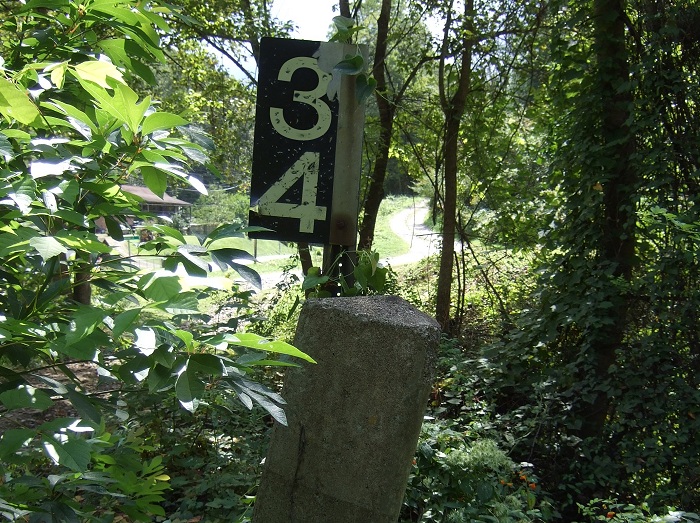
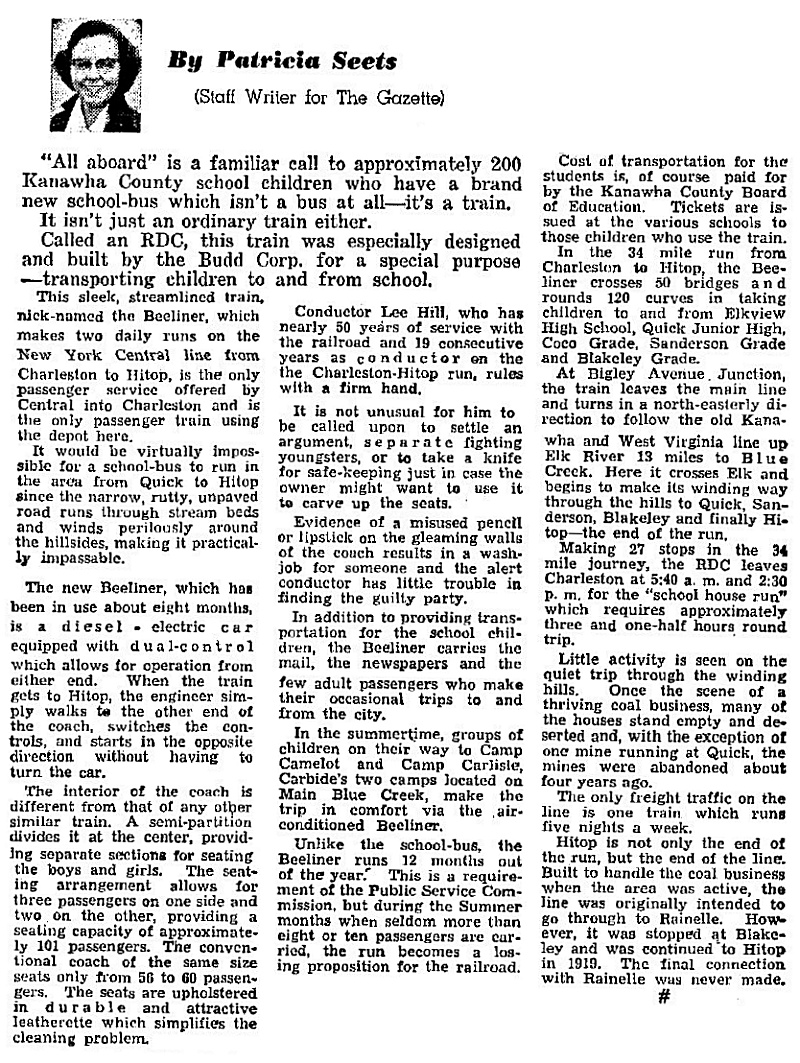
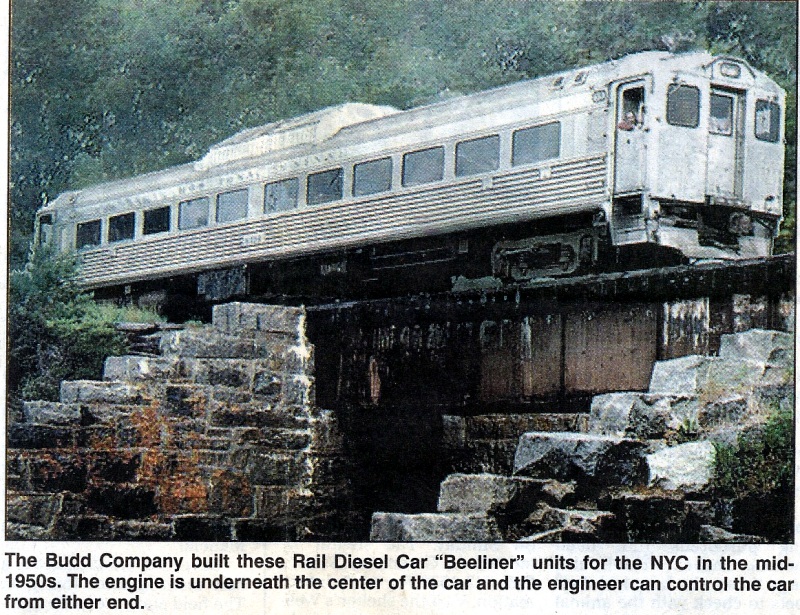
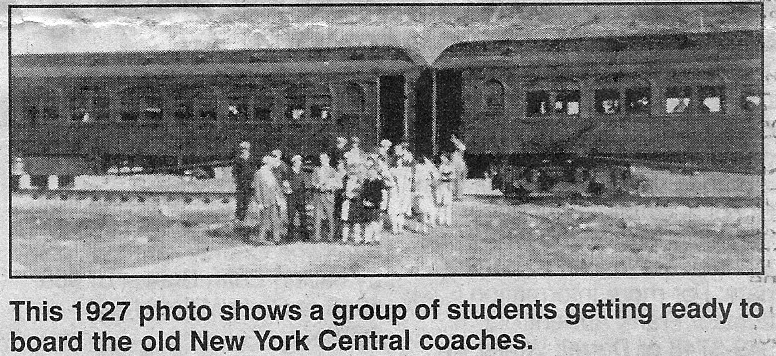
Much
information on this page courtesy of Curtis M. Morris
|

Gas engine New York Central passenger train at 3 mile.
 Same Gas Engine car parked at the Depot on Broad
Street.
Same Gas Engine car parked at the Depot on Broad
Street.

 NYC train as it crossed Blue Creek.
NYC train as it crossed Blue Creek.
Photo by Hazel Work
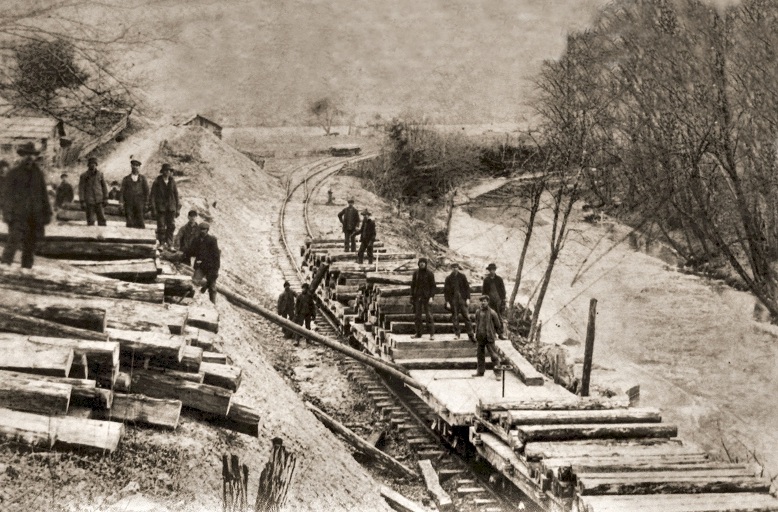
Laying the tracks in 1905 through
Quick WV
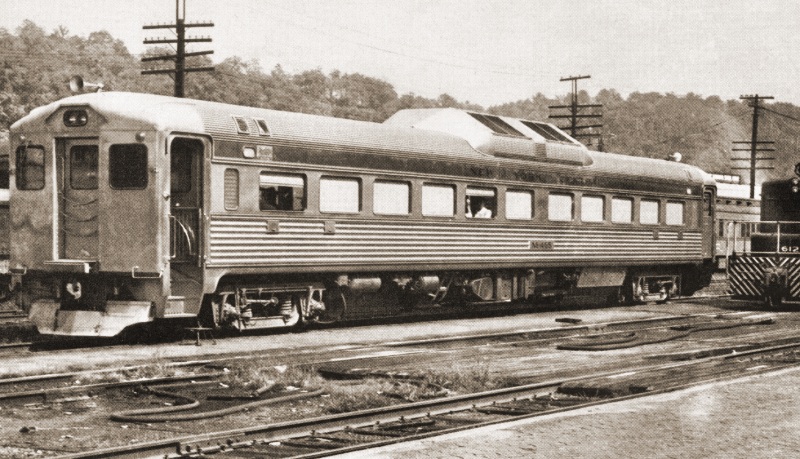 This is the train I saw everyday as it parked at the end of
Broad Street
This is the train I saw everyday as it parked at the end of
Broad Street

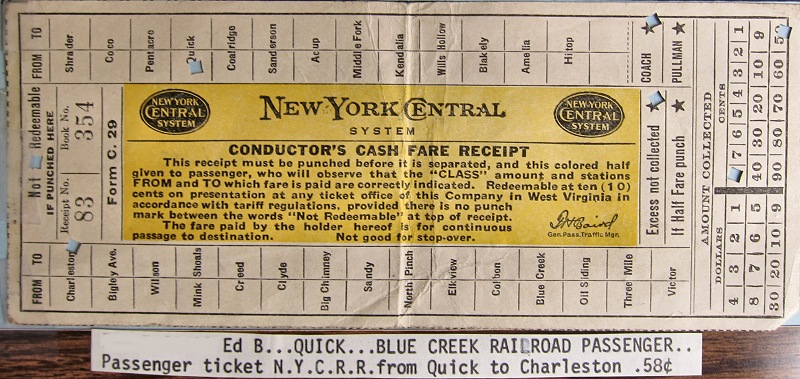
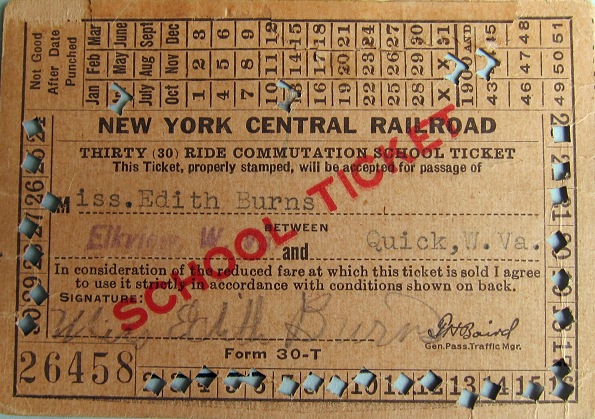
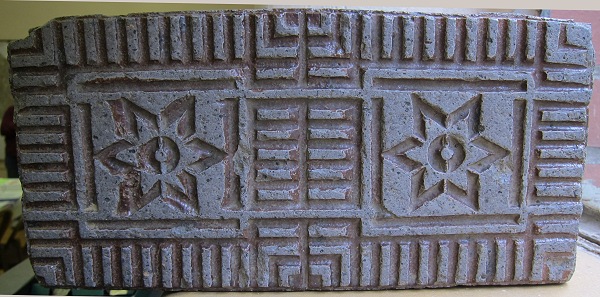
This is a brick from the property
surrounding the old NYC Rail Station on Broad Street
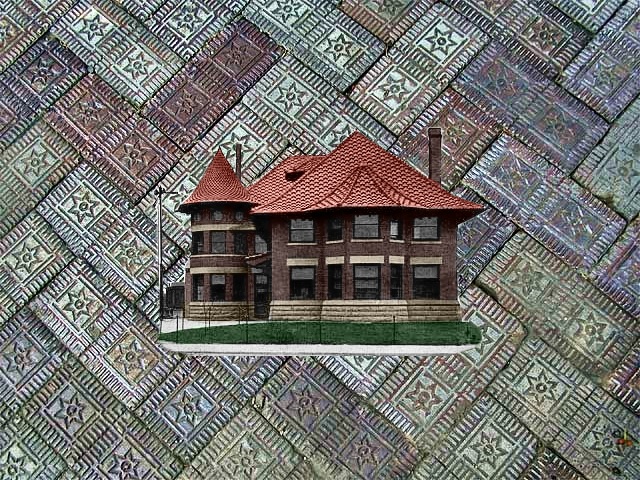
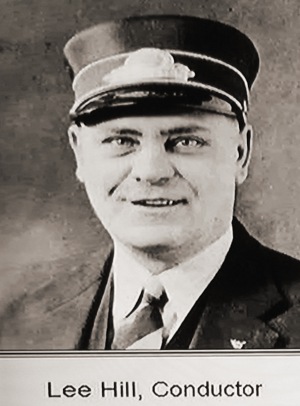
Lee Hill was known by several generations of school children
|
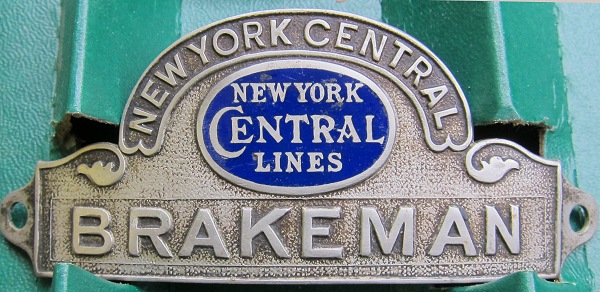
This great article from 1950 explains the route and the
brand new Diesel Engine

But
this Switch Engine didnt last long when they decided to use the Budd Car
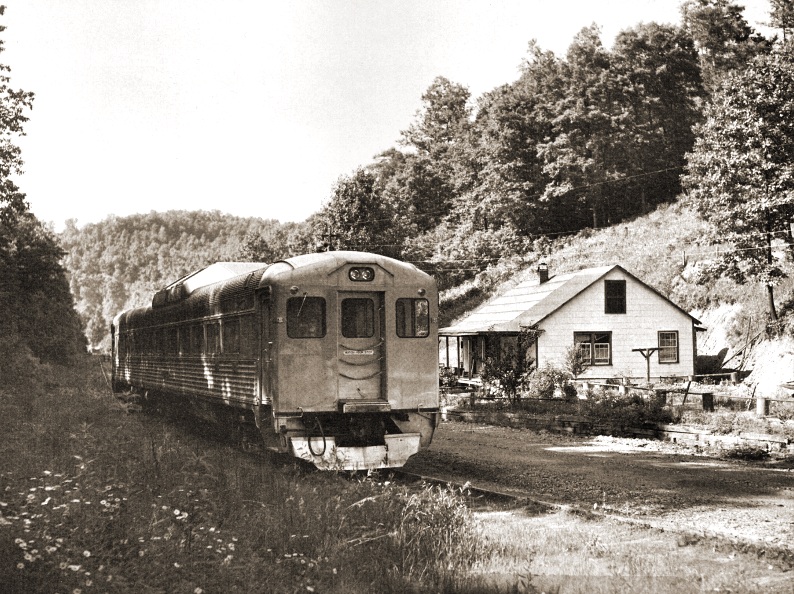
Budd Car at Hitop.
Photo
by Richard J Cook, courtesy of the Allen County Ohio Historical Society
For
folks who dont know where Hitop, Amelia, Kendalia is, just turn
up the hollow at Cedar Grove and follow the road all the way up Kelly's
Creek until you come to the very end. |
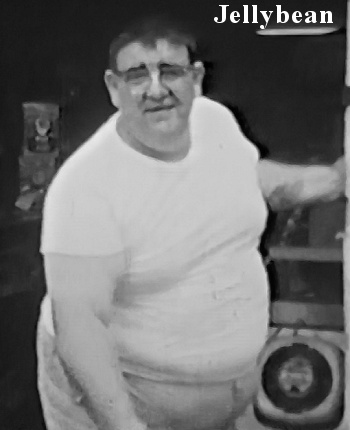
Postscript:
As
I lived right near the tracks in Charleston, and my Uncle own a tavern
on Broad Street (Bernies), we were very well acquainted with many
of the railroaders who lived and worked in this area. One man in
particular was a huge guy that everyone called "Jellybean".
He was a Conductor on the NYC train that ran from Charleston to
the
Carbide Sanderson mines about every day.
Stanley Walden was his real name, but no one ever called him by
that. He
lived a ways up Magazine Hollow. I knew Jellybean very well (for
a kid) and saw him
almost every day. He died of a heart attack while working on the
New York Central in 1966.
In those days,
every train had a caboose., and there were always 3 or 4 parked right
off Capitol Street waiting to be used. Us kids (me
especially) spent hours playing in them. They had ladders that
you climbed to get to the top where you could sit and
see out . I'll never forget the smell of them: Coal and wood.
Each caboose had a small coal stove and as I recall, a small John
that simply was a hole to the tracks below.
I had begged
Jellybean to take me for a ride in the caboose for a long time. Finally
one day he asked me if I'd like to go all the way to
Sanderson on their next run. (he had already cleared this with my
mom) and of course I was jumping for joy. I was maybe
11 or 12 at the time.
The next morning I met
Jellybean at the caboose, which was within sight of my house, and
after some shuffling around of empty coal cars, off we went.
This would be the greatest adventure of my life so far. A
kid... on a freight train... riding the caboose! Can you imagine
that today? NO!
The thing I remember most about the trip
was that A... I found myself in a completely unrecognizable world
only a few miles from my house, and B.... it was mostly secluded, the
tracks running though wooded areas where all landmarks disappeared.
I was all over that caboose! Up top on both sides looking
out the windows. On the front and back platforms.... everywhere I
could go! It WAS the trip of a lifetime for a kid. The
really strange thing is .... I dont remember Jellybean being in the
caboose with me. He may have ridden the engine, but that would
have been unusual, but possible I suppose because the train wasnt very
long..
Crossing over Blue Creek was when things really became unrecognizable.
I saw the most beautiful scenery! We even went through a
couple of small tunnels .....
and
over trestles.....
Finally we arrived at the
Sanderson mines and traded empties for full cars. We then
returned home, and the trip back was just as exciting. I knew
that not too many kids had the opportunity to do what I had just done,
but I didnt know that the tracks I had ridden were the same tracks as
the locally famous Beeliner.
As I look back on that trip, I
know that no kid will ever be able to ride a caboose on a
freight train . To begin with, there ARE no caboose's anymore.
And the laws of the land would never in a million years
allow it. ( it wasnt allowed back then either,
but you all
know how it was back then )
I didnt realize how important
this experience was at the time. But now, I know it was a one in
a million opportunity, and I appreciate the memory.... and
especially Jellybean for making it happen.
|
FINAL NOTE:
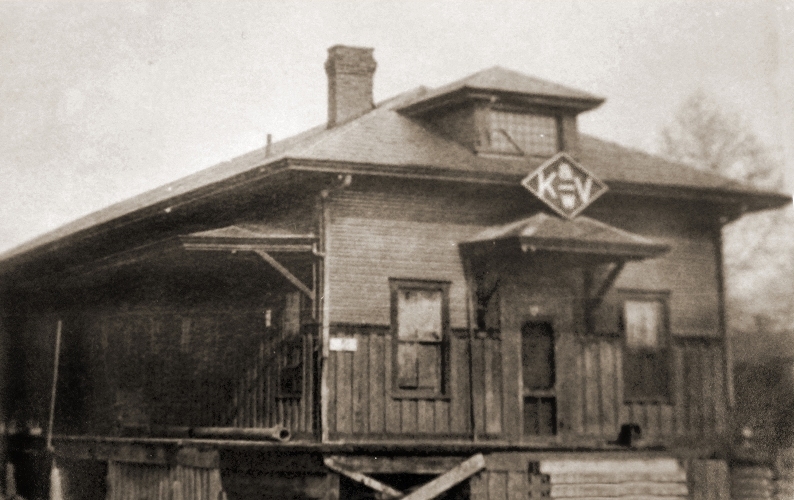
Main station of the Kanawha and
West Virginia Railroad on Spring Street
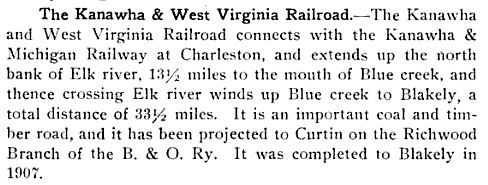
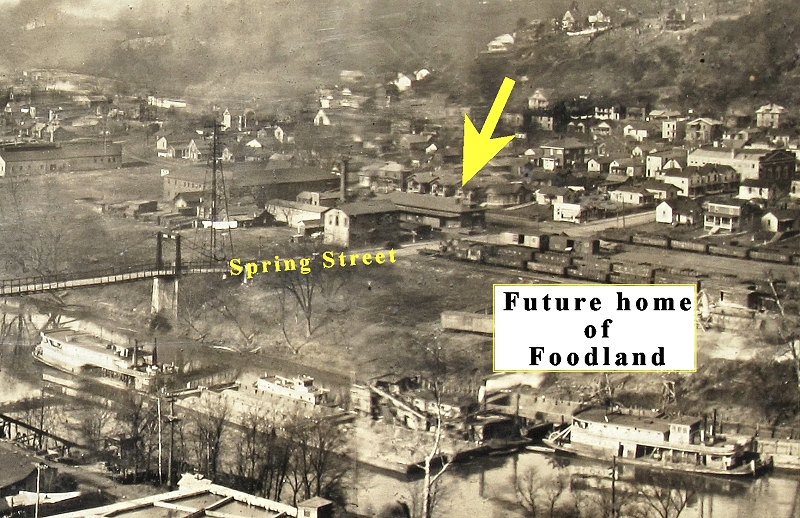
Spring Street on the West Side. Elk River in
foreground. Photo taken in the early 1920's.

Back to index



























